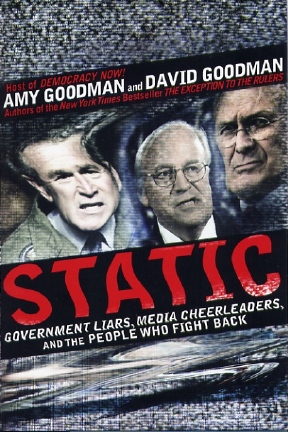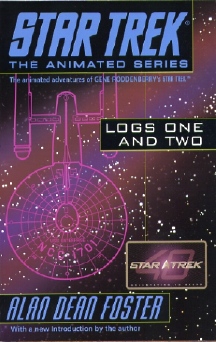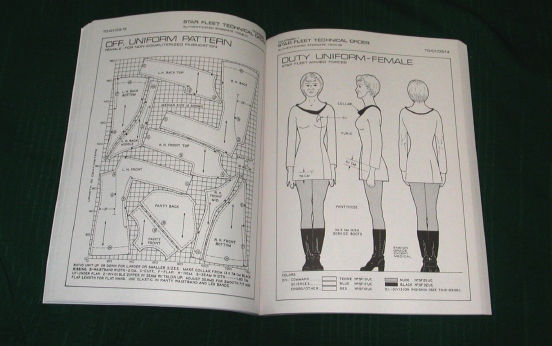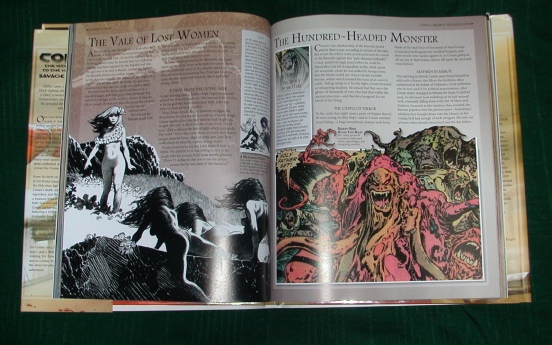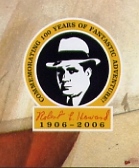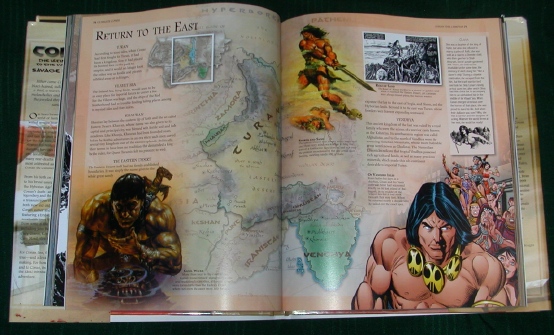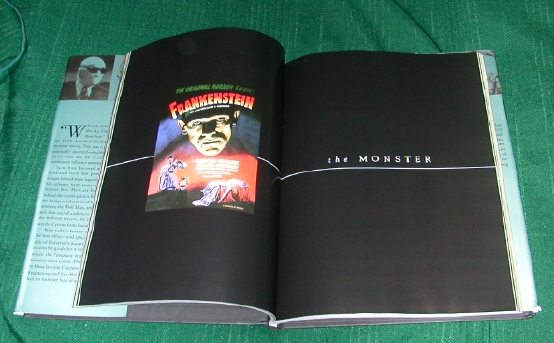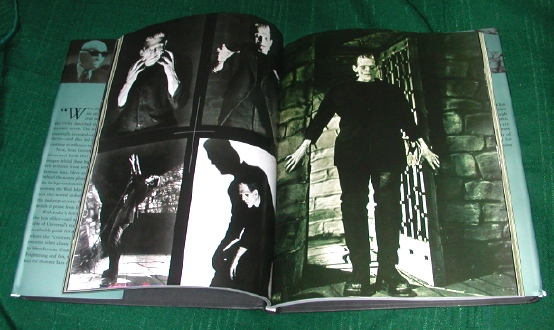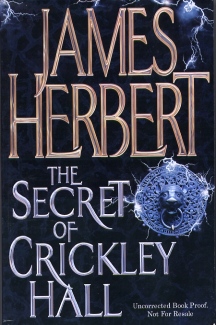|
|
|
This Just In...News from the Agony Column
|
09-15-06: Roland Topor Visits 'The Tenant' |
|||
Classic
Re-issue from Millipede With Ligotti
'The Tenant' is a classic story of identity, the Kafkaesque tale of Trelkovsky, an alienated young man who moves into an apartment whose previous inhabitant, one Simone Choule, committed suicide. Trelkovsky's not a mentally well man to begin with, but he's not unlike a person many will know if not recognize from the mirror. He's alienated, alone, cut off from humanity by his own inability to communicate either with himself or those around him. It's not surprising then, that his being, his self is subsumed into that of Simone Choule, whose powerful presence is not so easily removed from this world, even by death. Trelkovsky's just a problem waiting to happen, and the apartment once owned by Choule is the perfect place for the problem to unfold. It might not be a pretty picture, but it is surely a mesmerizing picture. If this is all starting to sound familiar, and not from your reading, then you've probably seen Roman Polanski's deeply disturbed/disturbing movie based on the novel. Polanski's film grates at the nerves, saws away our sensibilities in much the same manner as does the novel. But the experience of the two works is quite different; in Polanksi's film you're locked in the room with Trelkovsky; in Topor's novel, you're locked in the room inside of Trelkovsky. In either case, you're going to find the experience claustrophobic; in fact it will evoke every phobia you might imagine and a few you cannot. So long as you enjoy this sort of thing then this is the novel for you. But these are not sunny thoughts of happy days. Topor's name may be familiar to readers of this site from another movie connection; with Renee Laloux, he created Fantastic Planet, a 1973 movie that expanded the boundaries of both animated features and science fiction to regions neither has ever really entered since. The same sense of the absurd is at work here, albeit in a clamped-down-to stuffy-death mode of realism. But both works create for readers the feeling that anything might happen; in 'The Tenant' most of those things involve distressing evidence of severe mental illness. Madness as the ultimate fright-fest. Or our final destination. We may have already arrived. Like me, you're probably thinking that this explains the image on the cover, and you’d be right. In fact, the book includes a bevy of extras that make it even more desirable than simply the long-lost (to me at least) text. These include a gallery of drawings by Topor himself, who did the cover image and clearly had quite a bit to do with the look of Fantastic Planet. The drawings are all as weird and all as good as the cover, the perfect compliment to this gorgeously designed book. You get four short stories, out of print for thirty years, all related to 'The Tenant', just in case you start to recover from the withering gloom that will most assuredly settle over you when you read the book. And better still, you get an introduction by less stellar a scholar and writer than Thomas Ligotti. Ligotti's analysis will take you into the world of Pirandello and from there back into the void of terror that is 'The Tenant'. It's crystal clarity aimed at the pitch-black depths. Not a pretty picture. But lucid, yes, lucid in the face of madness. Should such lucidity sound entertaining, should such darkness seem to be conversely some form of light, this is the book for you. And if it is not for you, you might want to consider whom, exactly it is for – and whether they are watching you at this moment. With some intent. |
|
09-14-06: Turn up the 'Static' |
|||
A
Print Interview With Amy Goodman
RK: Amy, your show, Democracy Now is presented in a format and with a style that is quite different from any other newscast, anywhere. How and why did and you create the look and feel with which you deliver the news? AG: Democracy Now! is truly grassroots media – when we moved from WBAI to the Firehouse, we started just pointing cameras at our radio show. The look has developed slowly and carefully, with the addition of video news wire and still photo services, better equipment, and the contributions of many skilled tv and film professionals. The format is critical, in that we do not hew to a so-called “show clock”, where we have to dump out of an interview because of a scheduled commercial or underwriting break. People are hungry for information, and when they have access to a solid, well-prepared long-form interview, they really like it. That is why more and more people are tuning in to Democracy Now!, and why they are listening for longer and longer periods of time. RK: You started as a radio broadcast, and you've expanded into television and books. How have you managed the expansion and kept your focus on the stories that aren't getting exposed by other sources? Do the new venues offer new opportunities to find and report news? AG: We focus on collecting and reporting solid, well-researched news. With the advent of multiplatform digital delivery, news providers like Democracy Now! have an opportunity to push the content out to different audiences at different times. One important way we do this is by recruiting volunteers to help produce the transcripts – this allows us to post the transcripts to the web for free access to the public, and for the news aggregators like news google and yahoo news to crawl our site so the content is more widely available to the public. Digital audio files and now compressed video files are allowing incredible advances in relatively low-cost news gathering and news distribution. There are now increased opportunities for independent media, and more than ever an increased need for it. RK: Can you tell us about the network of independent media, from bloggers and websites to podcasts and broadcasts that you work with and draw on? Is there an organization that helps all these sources collate and disseminate information? AG: We are constantly in touch with independent journalists. Many of them have blogs but who write for prominent print outlets, many are full-time print reporters who get very little access to the broadcast media. We have worked with the global, grassroots media collective indymedia.org, since its inception at the protests against the WTO in Seattle in 1999. commondreams.org is an excellent source for daily op-ed pieces and press releases from progressive organizations. Our producers have personal contacts with hundreds if not thousands of reporters, bloggers, and other media watchers who direct and disseminate stories that we follow up on. RK: Your ability and willingness to get to dangerous places to report news before other sources is amazing. How do you get to these places and how do you make sure you get back with the story? Can you talk about the place you went that you found most frightening? AG: What makes a place dangerous is inevitably the presence of courageous people who are opposing some repressive force. There are repressive forces everywhere, whether they are states or organizations, but wherever they are there is opposition. So the imperative to go to these places is simply to give the actions of these people in opposition the coverage that they deserve. It can be hard to gain access to some places. I was blacklisted by the government of Indonesia, labeled by that military dictatorship a “threat to national security,” and kicked out of the country several times throughout the nineties. I may still be on the list. When going to Haiti during the coup of 1991-1994, I caught the last American Airlines flight before they stopped going to Port au Prince. The crew members begged me not to disembark. But I had seen the slaughter happening on the television news, and knew that I had to go there. Being a white American bequeaths an amount of protection in many of these areas, which is a privilege that we must employ when we can. This is no protection now in Iraq, for example, and that violent occupation has proven to be the most fatal for reporters and media workers. RK: One of the most important aspects of your work is that you broadcast every single day, and are always there and ready for action in the name of your values. You're a constant, re-assuring presence. Who re-assures you? Who gets you to the microphone? AG: The people who we have on are my biggest inspiration, as are the people in the audience, who let us know how much they rely on Democracy Now! RK: Your new book, 'Static' concerns itself with the insidious effects of fake news. Could you talk about what fake news is, how we can spot it and how we, as an audience can combat it? AG: Fake news comes in many different stripes now – there is the comedic version popularized by Jon Stewart and Steven Colbert. That is clearly a parody. The harmful fakes news are the produced “Video News Releases” or VNRs – produced with by an advertiser to promote a product or service, but made to look like a news piece and distributed to news stations for carriage. What is shocking is that these news channels, many with their news staff slashed due to media consolidation, actually run these pieces. Then there is the fake news of government propaganda, perhaps the most dangerous. We have the Bush Administration paying pundits to support policies, like Armstrong Williams being paid $250,000 to write favorably on No Child Left Behind. And there now U.S. government contractors being paid huge sums to pay Iraqi news outlets to carry their fake news pieces. Readers know that Goodman is great to see in person, and they'll have ample opportunity to do so. Check out the Democracy Now! website and attend one near you, especially since they often help benefit local NPR affiliates. And tell them I [Rick Kleffel:Agony Column] sent you! Thanks! |
|
09-13-06: 'Conan', 'Monsters', 'Star Trek Star Fleet Technical Manual' |
||||||||||||||||||||
Agonizing
the Coffee Table
Some books make me wish I had a coffee table. Alas, long ago, ours was called into service as the final resting place of a famous labor personality. At least, that's our story and we're sticking to it. But were I to have a coffee table, some recent arrivals to the Rolling Shelves would certainly find a home there. 'Conan: The Ultimate Guide to the World's Most Savage Barbarian' by Roy Thomas (DK Books ; September 2006 ; $24.99) and 'Monsters: A Celebration of the Classics from Universal Studios', with a Forward by Forest J. Ackerman (recipient of the Big Heart Fan award at this year's Hugo Celebration) (Ballantine ; October 3, 2006 ; $29.95) and the you-can't make-it-go-away 'Star Trek ® Star Fleet Technical Manual', (Del Rey / Ballantine Books Trade Paperback Reprint ; September 6, 2006 ; $17.95) "researched and compiled" by Franz Joseph all demonstrate different approaches to creating the perfect coffee table book for the typical Agony Column Reader. Which one or ones you'll like will depend upon what you demand from a coffee table book. And of course, whether or not you have a coffee table.
That's not really the case with 'Star Trek: Star Fleet Technical Manual'. Well, no explicit sex, but then again, not a lot of reading, either. No, lots of illustrations here, kind of crude, with some text that, were you to read it, might transform you into a UN Diplomat as surely as Lon Chaney transformed into the Wolf Man and probably more frightening to witness. That said, the circular-command, push-button, mini-skirted future of the original Star Trek certainly has lots of appeal, whether it be historical or actual. The manual will for some of us be a journey down memory lane, and for others of us a journey down WTF?!?!? Lane.
From the Federation Codes, nicely laid out in ALL CAPS, BLUEPRINT STYLE LETTERING to the three, count 'em three almost-identical versions of the DUTY UNIFORM, FEMALE (she's firing phasers on kill and then hitting the disco, in style!) 'Star Fleet Technical Manual' is one of those very odd exercises in fictional non-fiction that tells more about times in which the book was written than anything else.
And in what other books can you simultaneously experience the thrills of nostalgia with the thrills of seeing a blueprint for a phaser that looks more like a modern kitchen appliance than a weapon of war. And that is precisely where the legacy of the 'Star Fleet Technical Manual' is to be found, at Bed, Bath and Beyond, not beyond the final frontier.
I first encountered Conan when I first started reading SF&F, as a typical adolescent male. At that point in history, there were no Conan comics or movies or TV series or anything but the books. (If there were comics, I wasn't allowed to or really interested in reading them.) So for some (mumble-mumble) years, I've lived with the Conan in my head. Seeing Conan illustrated on the page is really rather jarring for me. I can't connect the image on the page with the image in my brain. The image on the page inevitably looks embarrassingly like an underwear model. With this hard-wired disconnect in place the whole book acquires a certain distance that is probably applicable to a fairly significant number of people, but not the audience of this book. That said, I do enjoy paging through it to checkout the monsters and settings. And my experience of Conan –shudder to think, I read the books! – is probably no longer that of the general population. So, yo, GP; you lookin' for some Conan, you got it here. Though my favorite illustration is the silhouette of REH on the front cover in a gangster hat. Looks like he's ready to punch out some bad guys. Probably the folks who turned his barbarian into an underwear model.
And then, there is 'Monsters', the real art book in this particular pack. That is, all of these books feature art, but 'Monsters' is sort of the class act, with a museum-like presentation of photos of our favorite classic monsters from the Universal movies. Frankenstein, Phantom of the Opera, Dracula, Bride of Frankenstein, the Mummy, the Invisible Man and the Creature of the Black Lagoon are all to be found here, with essays by folks like Rick Baker, John Landis and even Stephen Sommers. If I thought that 'The Star Trek Star Fleet Manual' was austere (and in a blueprint manner, it is) this is beyond austere and well into elegant, the classiest photo book of monsters you're likely to find on any coffee table. It's pretty interesting as well, visually, because you'll realize just how far things have come and haven’t come.
On one hand, some of these creations look timelessly gorgeous, and on the other hand, some of the photos verge on blurry. I think that's just the result of the inferior technology of the time rendered with today's precision printing, the same sort of thing that you hear on CD versions of older music. But soft edges do add buckets of atmosphere. And that's what this book, indeed all these books are about: buckets of atmosphere. These are not books that you really sit down and read cove to cover. They are books you'll page through now and again, though the 'Conan' book really does have a good timeline for Conan's life. 'Monsters' may be gorgeous but it is not an exercise in academic study. 'The Star Fleet Technical Manual' is weird slice of the past's future, a prediction of how a river will run that is charmingly incorrect. Some of you will want all three of these books; some will want one or the other or the other. Some will sneer at the very notion of coffee table books. As a one-time parent of toddlers who snatched anything that might ever have been on a coffee table away, I sneer at the very notion of a coffee table. The books that are designed to live upon one, however, have a special shelf of their own. |
|
09-12-06: James Herbert Discovers 'The Secret of Crickley Hall' |
|||
Getting
Back to the Ghosts
On the other hand, as much as I wanted to like 'Once...', I found that novel annoying in many regards. It combined some sloppy sex scenes with Disney-esque fantasy elements. Now that I'm describing it that way, I'm thinking maybe I'd have liked it better if I had read a review of the novel that described it that way. You know, 'Snow White and the Seven...'. But at the time, I found it a hollow and only marginally competent thriller. So I stayed away from Herbert for a while, in spite of a few promising premises. With 'The Secret of Crickley Hall' (Pan Macmillan ; October 16, 2006 ; £17.99), Herbert is playing to his strengths, combining a nicely understated haunted house novel with the sort of big, fat mesmerizing, flu-inducing horror of his earlier works. The setup is pretty simple. There's a huge, old house in Devil's Cleave. Now, why someone would move to Devil's Cleave or even name a town Devil's Cleave – that's beyond the scope of this discussion. No, it's not. Let's talk a bit about that, the old "town with a forbidding name" trope we see in so many horror novels and movies. You've got to ask yourself what people might be thinking when they decide to name a town "Devil's Cleave", or "Panic" (located in Pennsylvania) or "River Styx" (located in Ohio). I mean, are you hoping to bring down some bad luck? Or just keep people away from your little patch of Paradise? I can surely understand the latter impulse. Of course, I live in a town called "Aptos". That's not forbidding, it's just weird though. Tough I'll allow it does seem to keep people out, and that suits me just fine. So, back to that badass house in Devil's Cleave, Devon. Crickley Hall. A nice countryside house, perfect for the Caleighs. They move in and as you can imagine, this proves to be a bad decision. Bump in the night is one thing; bump in the head is quite another. It's the kind of house where a whole lot of drinking is required to keep yourself drunk enough to feel sane. And this is the kind of novel that is perfect for reading while you sip your favorite beverage by the fireside on a chill October evening. In something of a good sign, if I'm not mistake that door-knocker on the front cover is, if the very door-knocker that graced 'Sepulchre', at least it's cousin. I like a big fat old horror novel, and I like the illness that reading one brings. I'm feeling kind of faint at the moment, a bit feverish. I think I'm going to lay down and read a bit, a nice little story about people who decide that "Devil's Cleave" sounds like a good place to live. Well, at least it kept these yo-yos out of Aptos. |
|
09-11-06: A 2006 Interview With David Edelman |
|||
Preparing for the 'InfoQuake'
Well in advance of my arrival, I had booked time at NPR West to interview a few authors, and one of them was David Louis Edelman, the author of 'InfoQuake'. I loved this novel, and the more I think about it, the more I like it. It stayed with me, this economic vision of the future as one giant marketing meeting and product development push. The characters were quite well delineated, the vision of the future seemed an entertaining twist on the present and the plot, about a last-minute product-launch crush, was so reminiscent of my own experiences that it seemed really gripping. So I was looking forward to meeting the author and chatting with him about the novel. Come Wednesday morning, we strapped ourselves into the trusty station wagon with Google directions in hand. I'd been to NPR West, so I sort-of had a sense of where it was. My wife drove, and we chatted with David about his life in the marketing world, and despite some fairly tense traffic, arrived on time. The studios were prepped for us, so David and I went in, sat down and talked. You'll hear the results in the MP3 and RealAudio files, and I hope you have your credit card ready if you don’t have David's book. If you feel the need, check out his website, where's he's got excerpts and all sort of extra material. The novel is getting a lot of praise, so though I'm known as the guy who likes everything (instead of the guy who only bothers to read books worth reading and knows how to find them), I'm at least not alone in my enjoyment of 'InfoQuake'. Edleman's vision of tense times in the product release process will strike a nerve with anyone who has endured a similar situation and probably anyone who has worked for a living. We've all either had the boss from hell or been the boss from hell, often both. Take a break from the non-stop nostalgia for disaster that you're being served today from all the slop-troughs out there and plunge yourself into a vision of the future where corporations rule the world. Wait, did I say future or present? What’s the difference, you ask? Well, in the future, you'll have heard this interview. You'll have read the book. And perhaps you'll have graduating from having the boss from hell to being the boss from hell. That's a good thing, right? Because when there's no room left in hell, you can be sure that there won’t be a shortage of qualified managers on earth. |

